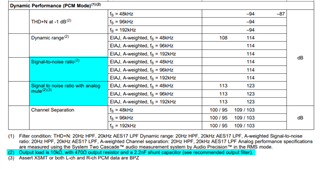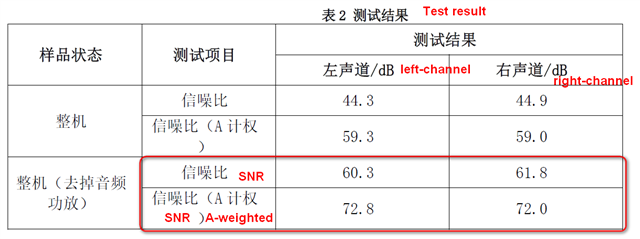Hi team,
The SNR tested by one of our customers is lower than the value marked in the datasheet. I would like to confirm the SNR test conditions. Is the SNR marked in the datasheet measured at the RC filter output or at the output pins (OUTRP \ OUTRN \ OUTLN \ OUTLP )of pcm5242 ?
schematic:
R96_3568_audiodriver_V1D0_20210824 (1).pdf

Best Regards,
Amy Luo


